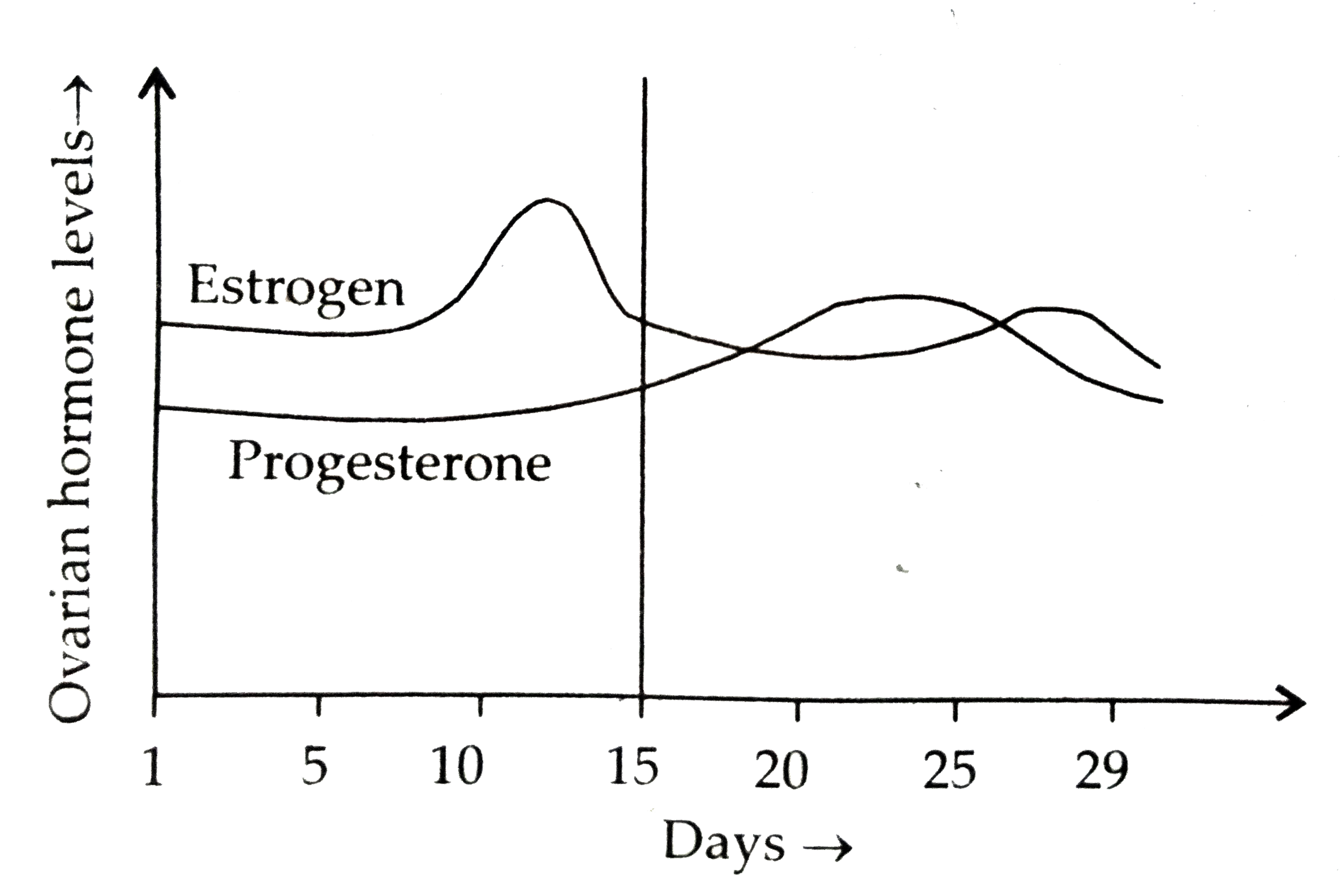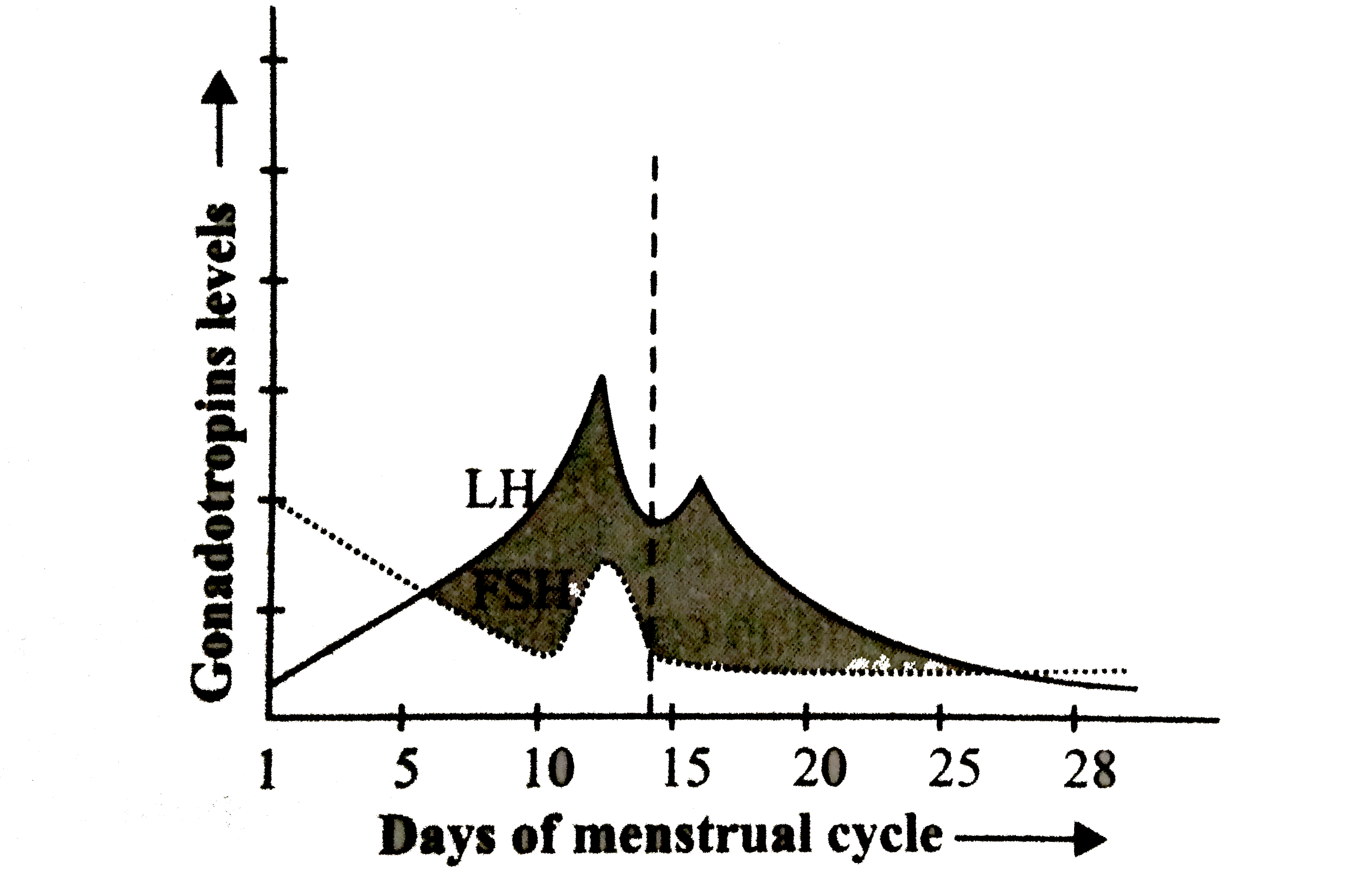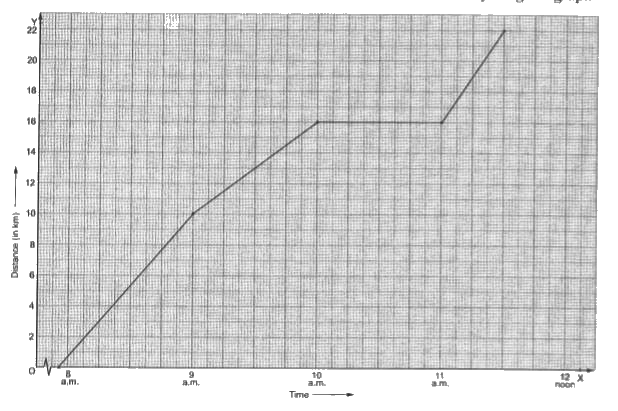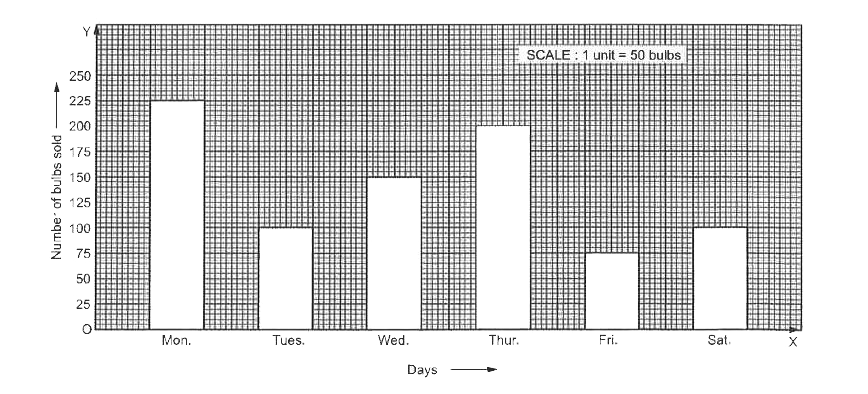 Read the graph given above and correlate the uterine events that take place according to the hormonal levels on
Read the graph given above and correlate the uterine events that take place according to the hormonal levels on
(i) 6 - 15 days
(ii) 16 - 25 days
(iii) 26 - 28 days (if the ovum is not fertilised )
(b) Specify the sources of the hormones mentioned in the graph.
(i) It is the follicular phase where the FHS stimulates the overian follicles to secrete estrogen which in ture stimulates the proliferation of the endometrium of the uterine wall . The endometrial lining begins to thicken.
(ii) Secretion of progesterone maintains the endometrium which is neccessary for implantation of fertilised ovum and other events of pregnancy.
(iii) When fertilisation does not take place, the endometrium, disintegrates, leading to menstruation making a new cycle.
(iv) Oestrogen is secreted by the ovarian follicle and progesterone is secreted by the corpus luteum.
Topper's Solved these Questions
- XII BOARDSBOOK - XII BOARDS PREVIOUS YEARCHAPTER - XII BOARDSEXERCISE - DELHI BOARD 2016
1 Videos
- XII BOARDSBOOK - XII BOARDS PREVIOUS YEARCHAPTER - XII BOARDSEXERCISE - [SET -I] [Comptt.] SECTION-A
4 Videos
- XII BOARDSBOOK - XII BOARDS PREVIOUS YEARCHAPTER - XII BOARDSEXERCISE - [OUTSIDE DELHI : SET-III] SECTION - C
10 Videos
- SAMPLE PAPER 2019BOOK - XII BOARDS PREVIOUS YEARCHAPTER - SAMPLE PAPER 2019EXERCISE - Section E Part B
3 Videos
Similar Questions
Study the graph given below related with menstrual cycle in females:
a. Identify ovarian hormones X and Y mentioned in the graph and specify their source.

Corelate and describe the uterine events that take place according to the ovarian hormone levels X and Y mentioned in the graph on -
i. 6 – 15 days
ii. 16 – 25 days
iii. 26 – 28 days (when ovum is not fertilized)
View SolutionRead the graph given beow. Correlate the ovarian events that take place in the human femaek according to the level of the pituitary hormone during the following day.

(i) 10th - 14th days (ii) 14th - 15th days (iii) 16th - 23th days (iv) 25th - 29th days
(If the ovum is not fertilised)
View Solution
Knowledge Check

Study the garaph carefully and correlate the hormone levels on
(i) 1-5 days
(ii). 12-14 days
(iii). 25-28 days (if the ovum is not fertilised)A(i) LH decreases and FSH increases
(ii). LH increases and FSH decreases
(iii). LH level maintained and FSH level increasesB(i). LH increases and FSH decreases
(ii). LH decreases and FSH increases
(iii). LH level increases and FSH level maintainedC(i). LH increases and FSH decreases
(ii). LH peaks and FSH peaks
(iii). LH level decreases and FSH level maintainedD(i). LH peaks and FSH peaks
(ii). LH increases and FSH decreases
(iii). LF level decreases and FSH level maintained.
Study the garaph carefully and correlate the hormone levels on
(i) 1-5 days
(ii). 12-14 days
(iii). 25-28 days (if the ovum is not fertilised)A(i) LH decreases and FSH increases
(ii). LH increases and FSH decreases
(iii). LH level maintained and FSH level increasesB(i). LH increases and FSH decreases
(ii). LH decreases and FSH increases
(iii). LH level increases and FSH level maintainedC(i). LH increases and FSH decreases
(ii). LH peaks and FSH peaks
(iii). LH level decreases and FSH level maintainedD(i). LH peaks and FSH peaks
(ii). LH increases and FSH decreases
(iii). LF level decreases and FSH level maintained.
(a) Specify the events which occur in the reproductive system of human female:
(i) If egg is fertilised.
(ii) If egg is not fertilised.
(b) Mention the changes that take place in uterus in both the above events.
View Solution(a) The diagram given below is that of a developing human foetus in the womb. Study the same and then answer the questions that follow :

(i) Name the parts '1' and '5' indicated by guidelines.
(ii) What term is given to the period of development of the foetus in the womb ?
(iii) How many days does the foetus take to be fully developed ?
(iv) Mention two functions of the part labelled 2 other than its endocrine function.
(v) Name the hormone (any one) produce by the part labelled 2
(vi) What is the function of the part marked 3 ?
(b) Give the exact location of amnion.
[ICSE 2011, 2014]
View SolutionA courter-person cycles from a town to a neighbouring suburban area to deliver a parcel to a merchant. His distances from the twon at different times are shown by the given graph.

Study the above graph carefully and answer the questions given below:
(i) What is the scale taken for the time-axis?
(ii) How much time did the person take for the travel ?
(iii) How far is the place of the merchant from the town ?
(iv) Did the person stop on his way ? Explain.
(v) During which period did he ride fastest ?
View SolutionGiven below is a graph showing the number of electric bulbs sold in a shop during a week
Read the bar graph carefully and answer the following questions
(i) On which day of the week was the sale minimum?
(ii) On which day of the week was the sale maximum
(iiI) What was the total sale during the week
(lv) What is the ratio between the minimum sale and the maximum sale

View SolutionStudy the diagram given below and then answer the questions that follow :

(i) Name the part labelled A. Name any two hormones produced by the part labelled A.
(ii) What happens to the part labelled B if :
(1) fertilisation takes place?
(2) fertilisation does not take place ?
(iii) Where does fertilisation occur ?
(iv) Draw a neat diagram of the human sperm as seen under high magnification and label the following parts: (a) Acrosome (b) Mitochondria.
View SolutionExplain the events in a normal woman during her menstrual cycle on the following days :
(a) Pituitary hormone levels from 8 to 12 days.
(b) Uterine events from 13 to 15 days.
(c) Ovarian events from 16 to 23 days.
View Solution
